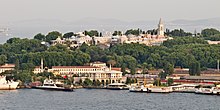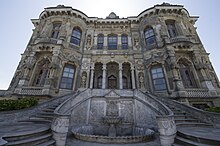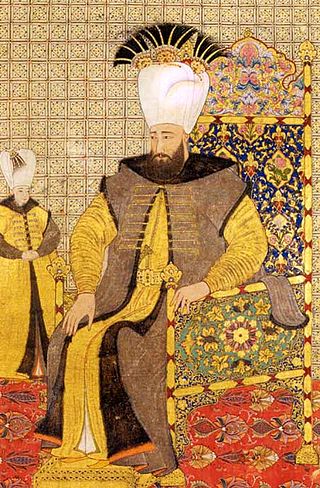
Ahmed III was sultan of the Ottoman Empire and a son of sultan Mehmed IV. His mother was Gülnuş Sultan, originally named Evmania Voria, who was an ethnic Greek. He was born at Hacıoğlu Pazarcık, in Dobruja. He succeeded to the throne in 1703 on the abdication of his brother Mustafa II (1695–1703). Nevşehirli Damat İbrahim Pasha and the Sultan's daughter, Fatma Sultan directed the government from 1718 to 1730, a period referred to as the Tulip Era.
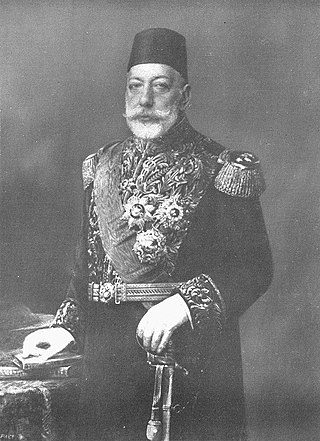
Mehmed V Reşâd was the penultimate sultan of the Ottoman Empire from 1909 to 1918. Mehmed V reigned as a constitutional monarch, interfering little when it came to government affairs, though the constitution was held with little regard by his ministries. The first half of his reign was marked by contentious politicking between factions of the Young Turks, and the second half by war and domination of the Committee of Union and Progress and the Three Pashas.

The Topkapı Palace, or the Seraglio, is a large museum and library in the east of the Fatih district of Istanbul in Turkey. From the 1460s to the completion of Dolmabahçe Palace in 1856, it served as the administrative center of the Ottoman Empire, and was the main residence of its sultans.

Dolmabahçe Palace located in the Beşiktaş district of Istanbul, Turkey, on the European coast of the Bosporus strait, served as the main administrative center of the Ottoman Empire from 1856 to 1887 and from 1909 to 1922.

The Balyan family was a prominent Armenian family in the Ottoman Empire of court architects in the service of Ottoman sultans and other members of the Ottoman dynasty during the 18th and 19th centuries. For five generations, they designed and constructed numerous major buildings in the Ottoman Empire, including palaces, mansions, konaks, kiosks, yalis, mosques, churches, and various public buildings, mostly in Constantinople.
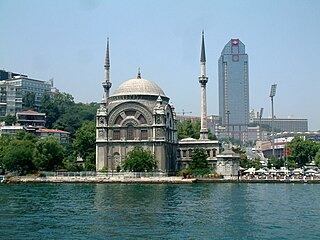
Bezmiâlem Sultan, called also Bazimialam Sultan, was a consort of Sultan Mahmud II, and Valide sultan to their son, Sultan Abdulmecid I of the Ottoman Empire.

Küçüksu Pavilion, Littlewater Pavilion a.k.a. Göksu (Skywater) Pavilion, is a summer pavilion in Istanbul, Turkey, situated in the Küçüksu neighborhood of Beykoz district on the Asian shore of the Bosphorus between Anadoluhisarı and the Fatih Sultan Mehmet Bridge. The pavilion was used by Ottoman sultans for short stays during country excursions and hunting.
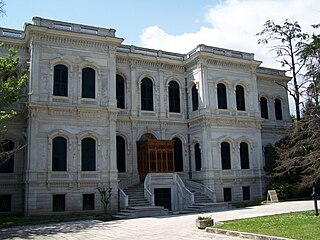
Yıldız Palace is a vast complex of former imperial Ottoman pavilions and villas in Beşiktaş, Istanbul, Turkey, built in the 19th and early 20th centuries. It was used as a residence by the sultan and his court in the late 19th century.
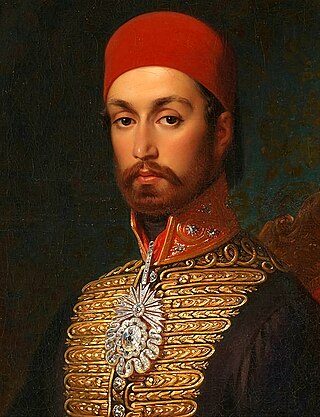
Abdülmecid I was the 31st sultan of the Ottoman Empire. He succeeded his father Mahmud II on 2 July 1839. His reign was notable for the rise of nationalist movements within the empire's territories.
Mihrişah Sultan, was a consort of Sultan Mustafa III, and the mother of Selim III of the Ottoman Empire, and his Valide sultan for 16 years from 1789 until 1805.
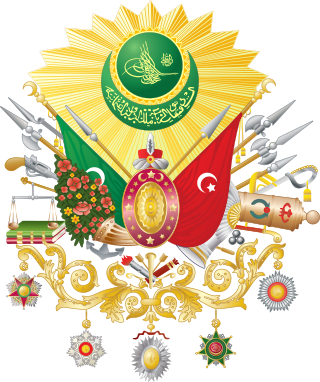
The following outline is provided as an overview of and topical guide to the Ottoman Empire:
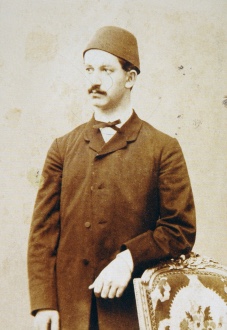
Şehzade Ahmed Kemaleddin Efendi was an Ottoman prince, son of Sultan Abdulmejid I and his consort Verdicenan Kadın.

The following outline is provided as an overview of and topical guide to Istanbul:
In Turkey, the Directorate of National Palaces is an institution responsible for protecting national palaces across the country. It is affiliated with the office of the President of Turkey.
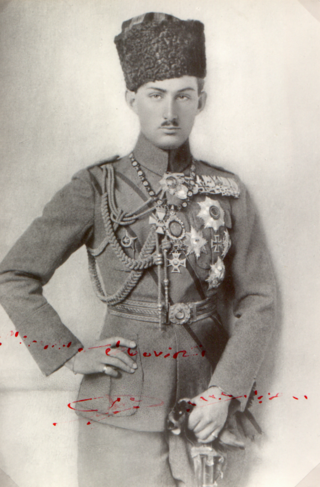
Şehzade Ömer Faruk Efendi was an Ottoman prince, the son of the last caliph of Muslim world Abdulmejid II and his first consort Şehsuvar Hanım. He was also the son-in-law of Sultan Mehmed VI of the Ottoman Empire because he married his younger daughter Rukiye Sabiha Sultan.
Şehzade Mehmed Şevket Efendi was an Ottoman prince, the son of Sultan Abdulaziz and Neşerek Kadın.

Ottoman Baroque architecture, also known as Turkish Baroque, was a period in Ottoman architecture in the 18th century and early 19th century which was influenced by European Baroque architecture. Preceded by the changes of the Tulip Period and Tulip Period architecture, the style marked a significant departure from the classical style of Ottoman architecture and introduced new decorative forms to mostly traditional Ottoman building types. It emerged in the 1740s during the reign of Mahmud I (1730–1754) and its most important early monument was the Nuruosmaniye Mosque, completed in 1755. Later in the 18th century, new building types were also introduced based on European influences. The last fully Baroque monuments, such as the Nusretiye Mosque, were built by Mahmud II in the early 19th century, but during this period new European-influenced styles were introduced and supplanted the Baroque.

Şehzade Mehmed Burhaneddin Efendi was an Ottoman prince, the son of Sultan Abdulmejid I and one of his consorts, Nükhetsezâ Hanım.

This article covers the history of Ottoman architecture from the 19th century up to the end of the Ottoman Empire in the early 20th century. The 19th century saw an increase of architectural influences from Western Europe in Ottoman culture. The Ottoman Baroque style, which emerged in the 18th century, continued to be evident in the early 19th century under the reigns of Selim III and Mahmud II. Empire style and Neoclassical motifs also began to be introduced around this time. Subsequently, a trend towards eclecticism became prominent in many types of buildings, particularly during the Tanzimat period, as exemplified by the Dolmabaçe Palace and many mosques of this era designed by architects of the Balyan family.
